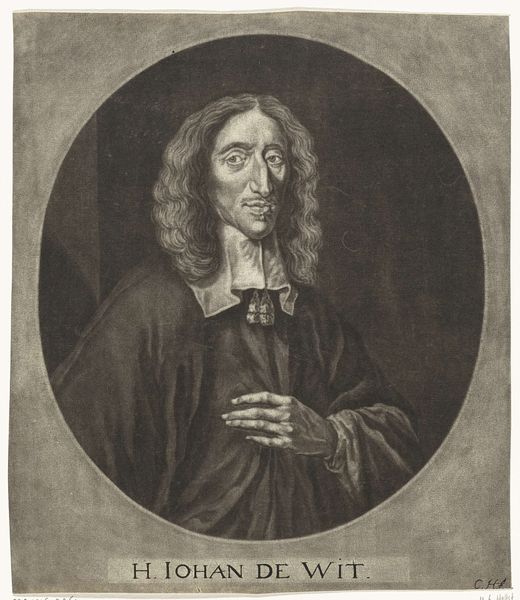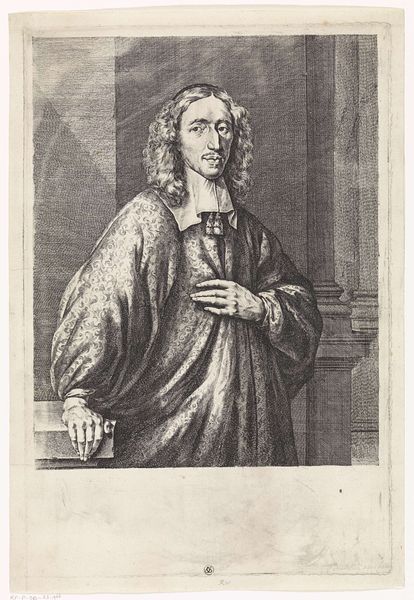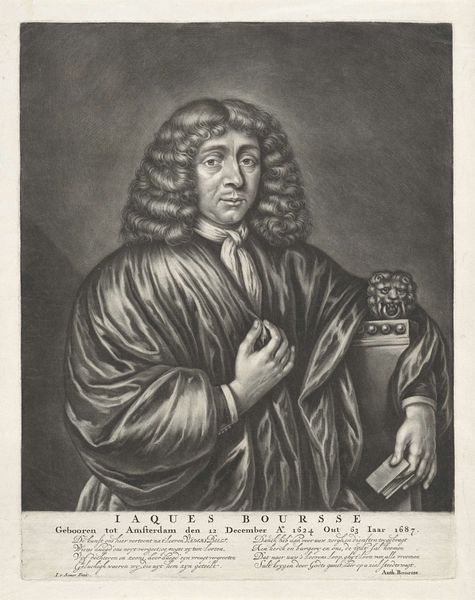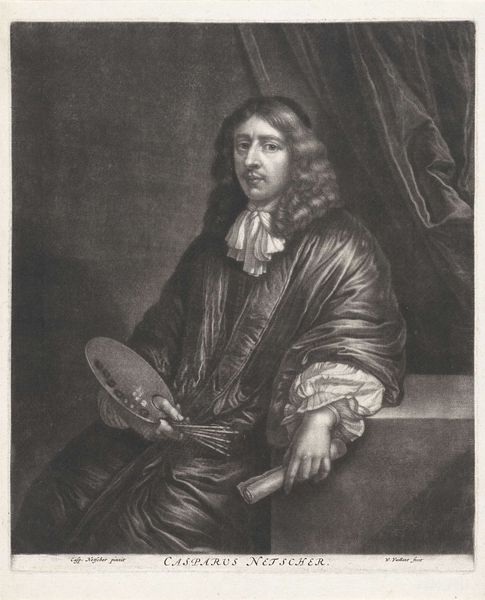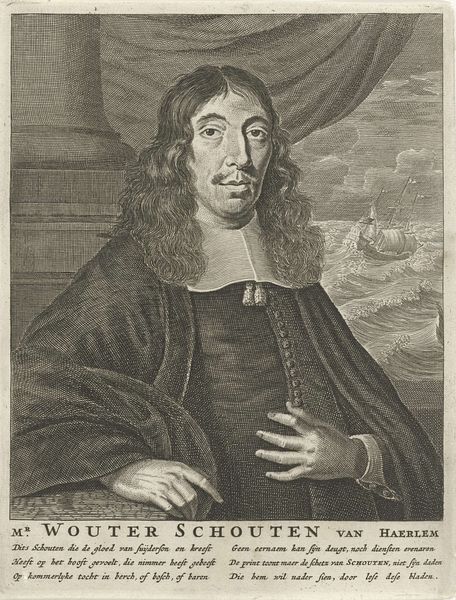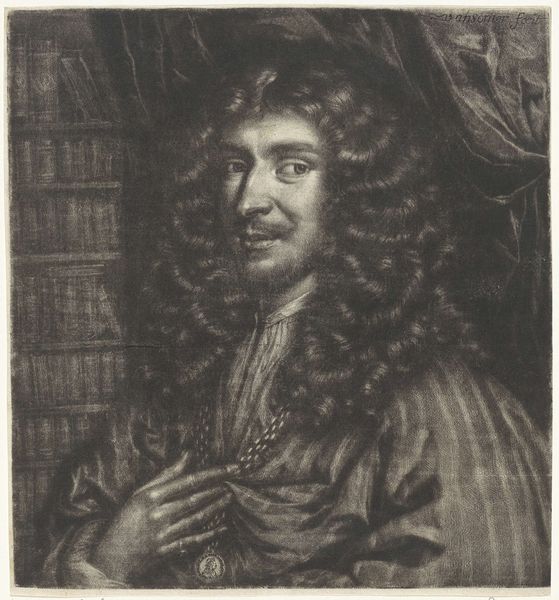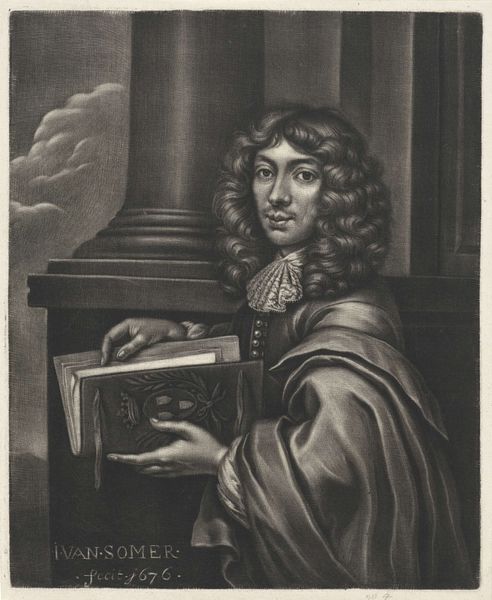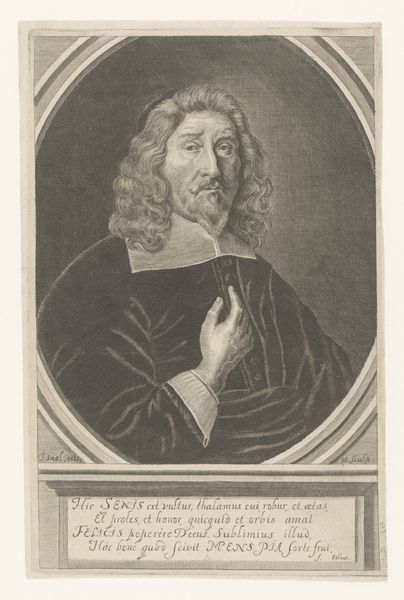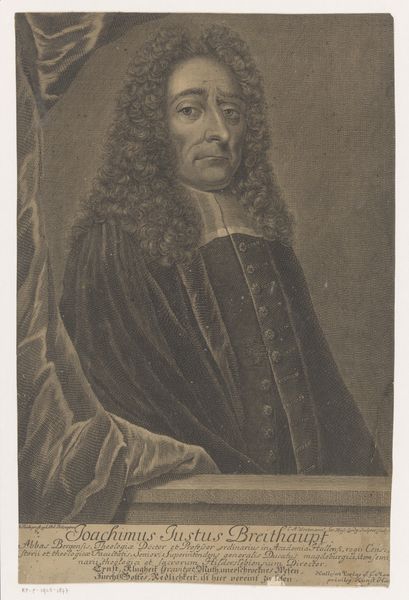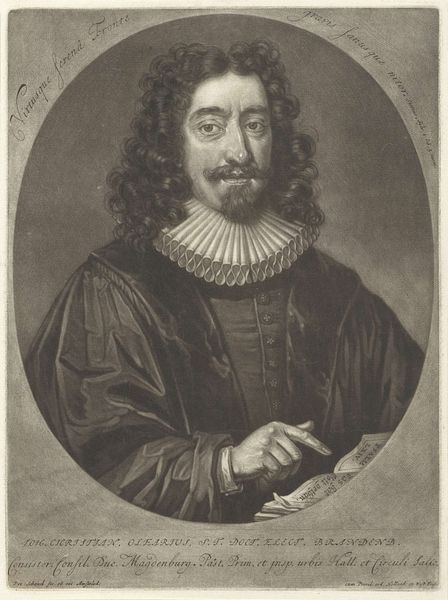
engraving
#
baroque
#
portrait drawing
#
engraving
Dimensions: height 242 mm, width 175 mm
Copyright: Rijks Museum: Open Domain
Editor: So, this engraving by Bernard Vaillant, dating roughly from 1642 to 1698, is titled "Portret van Paul Dusoul." It has a formal, almost imposing feel, especially with that heavy robe and the draped background. I'm struck by the contrast between the softness of his hair and the sternness of his expression. What’s your take on this portrait? Curator: It’s interesting how you note the contrast between soft and stern. Considering the period, portraiture like this functioned as a carefully constructed statement about the sitter's status and role in society. Dusoul’s identity as a minister of Leiden is crucial here. The heavy robe, rather than just being a piece of clothing, signifies authority and learnedness. What do you make of the theatrical backdrop? Editor: It feels very staged, artificial almost. Like he's posing for a particular image. Curator: Exactly. The drapery, the books – these are props designed to elevate Dusoul, to place him within a visual tradition of respected scholars and leaders. Consider also the power dynamics embedded in portraiture at this time. Patrons like Dusoul actively shaped their representation, reinforcing existing hierarchies. Vaillant, as the artist, navigates that carefully. Do you think this portrait humanizes Dusoul, or further idealizes him? Editor: I think the intent was idealization, but seeing it now, the very obvious staging and the minister's gaze, I almost see a vulnerable side, or at least the hint of a real person beneath the image. It's not completely successful as pure propaganda. Curator: A nuanced reading! That tension you identify is exactly what makes analyzing historical portraiture so compelling. We see the performance, the societal expectations, and perhaps, a glimpse beyond. Editor: This makes me think about the function of images. It really puts the political context front and center in interpreting what might seem like a straightforward portrait. Thanks!
Comments
No comments
Be the first to comment and join the conversation on the ultimate creative platform.

